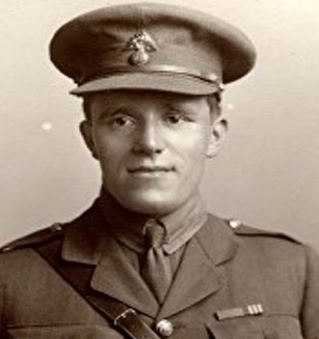Ceremony to Be Held for Hammersmith Hero Frederick Palmer
On 100th anniversary of WW1 battle which led to him being awarded Victoria Cross
A special ceremony is to be held celebrating the courage of Hammersmith's Frederick Palmer - 100 years after the World War One battle which led to him being awarded the Victoria Cross.

During the battle, in Courcelette in Northern France, after all the officers in his company fell victim to machine gun fire, Lance Sergeant Frederick Palmer took command, gathered six of his comrades, cut through the barbed wire and rushed the enemy trench.
He then brought together the stragglers from other decimated regiments in no man’s land, and held the captured trench in the face of an incessant barrage of bombs and rifle grenades from front and sides.
Weathering a series of counter-attacks, Palmer and his band of brothers clung on for three hours.
During the eighth enemy counter-attack he was blown off his feet by a bomb, but picked himself up and defended the trench yet again.
"The very conspicuous bravery displayed by this non-commissioned officer cannot be overstated," read the King’s citation as Palmer received the highest gallantry honour in the land. "His splendid determination and devotion to duty undoubtedly averted what might have proved a serious disaster."
Now modern generations are coming together to pay tribute to Palmer’s heroism at a special ceremony on the 100th anniversary of the battle.
The ceremony will take place at 11am on Friday 17 February at the Shepherd's Bush war memorial on Shepherd's Bush Green. Among those attending will be Palmer’s son, grandson and other members of the Palmer family.
Fr Richard Nesbitt of Our Lady of Fatima, and the Rev Christopher Kellock, chaplain of the Royal Regiment of Fusiliers, will officiate
The event will be led by the Mayor, Cllr Mercy Umeh, who will dedicate a memorial paving stone to Palmer’s memory.
Hammersmith & Fulham’s Representative for the Armed Forces, Cllr Alan De’ath, welcomed the tribute to Lance Sergeant Frederick Palmer’s gallantry, 100 years to the day since the battle.
"The bravery that Lance Sergeant Palmer showed on that battlefield a century ago still resonates today," he said.
"It is humbling to remember the selfless valour he displayed, and it is fitting that we pause to pay tribute to a remarkable man, and to express our gratitude to all those who have died defending our country and our freedom."
Palmer, who had worked for a Hammersmith publishing firm before the outbreak of war, had enlisted as a private in the Kensington-based Fusiliers.
Palmer won the Victoria Cross when he was 25; one of nine medals from a military career spanning both world wars. He had already won the Military Medal (MM) in Gallipoli in 1916.
After the action in February 1917, all survivors of the attacking party were awarded the Distinguished Conduct Medal or MM.
The VC was presented to Palmer – born in Hammersmith on 11 November 1891 – by King George V in Hyde Park.
Palmer’s heroism was recognised at the time by a grateful borough. He attended a special meeting of Hammersmith Council in the town hall in April 1917, signing his name on the borough’s roll of honour immediately below that of Queen Mary.
When Palmer walked into the council chamber, everyone stood and cheered. Palmer said he felt more nervous attending the ceremony than he had during the battle!
He later joined the Royal Flying Corps as an observer, before moving to Malaya in the 1920s, setting up a planting business.
After the outbreak of the Second World War, he returned to England, rejoined the RAF and flew in the Battle of Britain, achieving the rank of Wing-Commander. He retired to Hampshire in 1950, and died in 1955, leaving a widow, three sons and a daughter.
Palmer’s VC is on display in the Tower of London.
January 20, 2017
Related links
|
